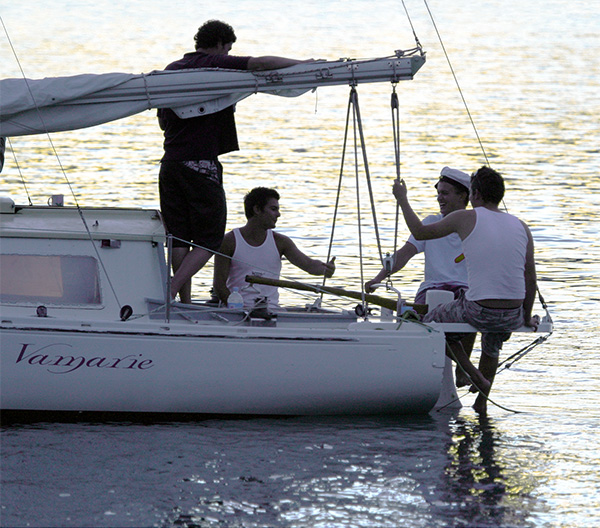Action plan preparing Mahurangi for the transition

Million Miles Away: The same Aucklanders who seek the solice of the Mahurangi support the on-going protection of the harbourscape and its waters. photographer Max Cumming 2006
Saying no to the chairman was not part of the plan.
But when he put the question ‘But don’t you consider that this provides the mandate?’, it couldn’t be dodged.
This, was the Royal Commission on Auckland Governance. And no, it did not provide a mandate to impose a new governance structure on the Auckland region.
Mahurangi Action’s submission was that the commission should produce several well-developed models, from which the people of the region could choose.
The terms of reference should have spelled out that it was the commission’s job to tease out a short list of options for how the region could be better organised. The terms of reference should have stipulated that the final choice was to be put to a referendum of the people of the region. But the commission could have readily addressed that deficiency. The precedent: The Royal Commission on the Electoral System, when it recommended a referendum to decide whether proportional representation should be introduced.
It takes courage and respect, to trust the people, and the commissioners lacked both. The commission chairman’s warning to the incoming government to adopt the recommendations in toto reflected a dawning realisation—the commission had placed its faith in Wellington, rather than in the people of Auckland. The worst that could have happened would have been a democratically decided outcome. Predictably then, the new single council will start life with poor support, and the mayor of Rodney continues to pour resources into a rearguard action.
Total restructuring can seem like the rational answer to glaring local government deficiencies. But had the commissioners become better acquainted with this field, less disruptive shared services options would have been fully considered, and Brian Dollery’s body of work might have got a mention.
Regardless of what form the new governance arrangements for the region took, the Mahurangi was always going to be in the hands of Aucklanders. The demand for residential sites with a marine outlook, handy to the metropolis, is insatiable. Even with rural zoning in place since the late 1970s and a relatively small degree of subdivision, the rural look and feel of the scenic ridge road Mahurangi West has been eroded. But had the Mahurangi not enjoyed Auckland regional governance, it is likely that the place would have become as residential as Mangawai.
The launch of the draft Mahurangi Action Plan on Monday will mark a rare and refreshingly constructive initiative that will take some of the chaos out of the transition. It is a collaborative process involving business, both councils and the community. And in the remote eventuality that the mayor’s bill results in the government making Rodney part of the Northland region or autonomous, the action plan will help anchor that all-important attribute of the harbour:
The sense of being a million miles from the metropolis.
